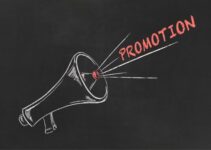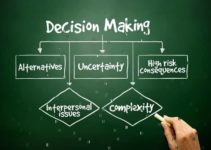Different Sales Forecasting Techniques/Approaches
The approaches to forecasting include the causal and non-causal approaches. In the causal approach, the business has no control over the causal variables in society. These variables include gross national product, population, and general economic conditions. However, a business does exercise some control over its prices, advertising, production lines, and the size of its sales team.
Following an in-depth analysis and study of the underlying causes and variables, the analysts employ various mathematical methods to project future trends. Based on these projections, management gets its sales forecast.
The non-causal approach is concerned with a thorough and detailed analysis of historical sales patterns. These patterns are plotted by analysts on graphs to reflect future sales projection. As the identification and evaluation of the underlying causal variables do not take place, the analysts work on the assumption that the underlying causes will affect future sales in a manner similar to the past.
The approach of applying particular statistical methods to deduce future sales from that of the past is often criticized because experts are of the opinion that rapid modifications in technology are resulting in vital changes in various business operations.
The indirect technique is used by analysts by first projecting sales for the industry. This data is used to project the company’s share in the industry total. In the direct technique, the step related to industry projection is skipped and simple and straightforward estimation of sales for the company is arrived at. Anyone of these techniques can be applied to the causal and non-causal approaches.
Sales Forecasting Techniques
A number of sales forecasting techniques are available for the use of businesses, big and small.
1. Top-down Forecasting
It’s a technique commonly used in industrial applications. This is the method commonly used for industrial applications. First, the management makes an estimation of the sales potential before developing the sales quotas.
The last stage is the construction of a sales forecast. However, when the underlying assumptions of the past are not applicable, problems arise with this method. Over time, the correlation between the quantity demanded and the economic variables may become weak or change.
2. Bottom-up Forecasting
It’s a technique used by analysts wherein the market is broken into segments and the demand for each segment is calculated separately. Industry surveys, intention to-buy surveys, and sales force composites are used by analysts to gather data. An aggregate of the segments is used to prepare a total sales forecast.
This is not a simple technique because the data may not always be accurate or uncomplicated. The data’s usefulness depends on the accuracy, completeness, and honesty of the customers’ responses. It also depends on the importance given to the survey by the sales staff.
The two forecasting techniques comprise many methodologies which can be classified as causal, qualitative, times-series analysis, and regression.
(a) Qualitative Techniques
Qualitative techniques depend on non-statistical methods of preparing a sales forecast. A company invites the opinion of experts, sales executives, the sales team, the supervisor of the sales department as well as external experts or consultants. Qualitative methods can be said’ to be judgmental composites of sales expected or anticipated. These techniques are often preferred in situations when
(i) the variables affecting consumer buying habits have changed;
(ii) current data is unavailable;
(iii) none of the qualitative techniques prove successful in a particular situation;
(iv) the planning horizon is beyond the reach of the standard quantitative methods
(v) when the data has not taken into account the technological advances or breakthroughs that have occurred or are expected to occur.
The Probability Assessment Method (PAM) forecasts sales volume by employing the opinion of internal experts. This provides probabilities between approximately 1-99 percent on certain target volumes. To translate these estimates into a cumulative probability curve, analysts plot the volumes by the probabilities they are assigned. This curve helps in forecasting.
The PERT or Programme Evaluation and Review Technique involves estimates of ‘pessimistic’, ‘optimistic’, and ‘most likely’ future circumstances. These three estimates are considered and weighed by analysts to form an expected value which helps in the computation of a standard deviation.
In this manner, analysts convert the small businessman’s estimates into measures of dispersion and central tendency. Due to the standard deviation, it is possible for the forecaster to estimate an interval of confidence around the anticipated value.
The Delphi Technique depends on the assumption that it is possible for many experts to come up with a better forecast than a single expert working alone. Users of the Delphi method invite the opinions of a panel and reprocess the outcome through the panel until a consensus is reached on a narrow, firm median.
In the Delphi Technique, panelists are isolated due to which many aspects of group behavior are prevented from exerting unnecessary influence. These aspects include domination by a handful of members, aggressiveness, and social pressure. Most small businesses avoid pursuing this because of the expense it involves.
A visionary forecast depends heavily on the personal opinions, insights, and judgment of a respected and responsible individual. The visionary forecast is supported by facts, information, and data related to different future scenarios. Yet, it is non-scientific in nature and is characterized by imagination and subjective guesswork. Although scientific information does not form the basis of such forecasts, many small businesses have gained by depending on such subjective data.
Historical analogy methodologies are aimed at determining future sales through analysis of the launch or introduction of a product and the sales growth of a similar item or product. Historical analogy looks for patterns that can be applied to the product currently considered for introduction. The past record, of several years, for one or more products, is required for this technique which is then applied to new product introductions.
(b) Quantitative Techniques
Time-series analysis and projection: In situations where the forecaster can infer the future impact of a variable on sales, from its behavior in the past, the trend project methods would work best. Forecasters seek out trends that form patterns that can be identified and recur frequently. While random variables lead to complex projections, obvious trends are formed by cyclical patterns and seasonal variations.
In its most simple form, trend projection analysis is concerned with the examination of past events. Analysts come up with a particular linear percentage trend expecting that the trend will continue. Randomness-the random element or event that majorly affects the forecast-is an issue/problem that arises in simple trend projection.
Yet another sophisticated form of trend projection is the moving average. This projection is based on the assumption that instead of following a particular linear percentage trend, the future will be an average of the post-performance.
Industry surveys are concerned with the survey of various businesses or firms that comprise the industry of a certain product. These surveys may include manufacturers as well as consumers or users. The use of a top-down forecasting approach in the industry survey technique results in the same benefits and drawbacks as the sales force composites and executive opinion.
Regression analysis may be multiple or linear. In the case of linear regression, a relationship is created by analysts between a single independent variable and sales. This relationship is then used for sales forecasting. With multiple regression, analysts study the relationships between multiple independent variables and sales.
Usually, this is achieved using a computer that helps in the estimation of the values of the independent variables and in their incorporation into a multi-regression equation. If analysts discover a relationship among various independent variables, a multiple regression equation can be developed to forecast sales for the year to come.
Another time-series approach which is similar to the moving average is exponential smoothing. Analysts use an exponentially increasing set of weights rather than a consistent set of weights for the observation made. This ensures that more weight is given to more recent or latest values instead of older values. Various adjustments are made to handle seasonal patterns and trends in the more sophisticated models.
3. Causal Methods
When a cause-effect relationship is established by analysts between a variable and sales, forecasts made by a causal model may be better than those made by other methods.
Rates of new product growth are forecast by life cycle analysis on the basis of projections of analysts of the product acceptance phases by various groups. These groups include early or late majority, innovators, laggards, and early adapters. This method is usually used to forecast new product sales.
The minimum data required by the analysts include the yearly sales of the item in consideration or the annual sales of a similar good. Often, the cause-effect relationships can be established only through market surveys.




